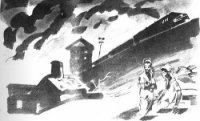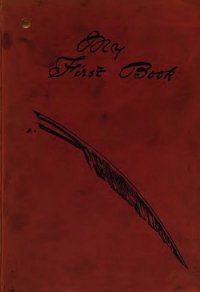Operation Nemesis: The Assassination Plot that Avenged the Armenian Genocide - Bogosian Eric (мир книг .txt) 📗
Every Friday, surrounded by infantry and cavalry, the sultan would enter the mosque at around eleven thirty with an entourage that included his sons. As his spies circulated among the participants, the sultan would observe the service from a special unseen chamber reserved for him. As soon as the service ended, he would exit the mosque quickly, step up into a two-seat phaeton drawn by two white horses, and drive himself back to the palace.
On Friday, July 21, 1905, Operation Dragon (Vishab) went into action. The Tashnag assassins slipped the gelignite-laden carriage into the procession. Because the ceremony followed a specific timetable, the bomb was set to go off within seconds after the sultan emerged from the mosque. On this occasion, however, Abdul Hamid was delayed when the Sheikh ul-Islam, the minister of public worship (evkif), approached him for a short conversation. The two spoke for barely a minute, but the delay was fateful. Lacking a remote control, the timer on the bomb could not be reset. The Tashnag bomb maker and twenty-six members of the sultan’s retinue died in the explosion. Another fifty-eight were wounded. The sultan escaped uninjured.
Abdul Hamid had hundreds arrested and tortured in an attempt to root out the conspirators, but to no avail. (Mysteriously, after only two years of confinement, the Belgian coordinator, Edward Joris, was released and allowed to return to his native country.) And again, though the attempt on the sultan’s life had been unsuccessful, the Tashnags’ reputation as fearless revolutionaries spread all over the empire. With the assault on the Bank Ottoman and now the attempt on Abdul Hamid’s life, the Tashnags were establishing themselves as a truly dangerous terrorist organization. In the rural provinces their agrarian principles were blended with armed revolt against the Kurds, but in Constantinople, their goals were specifically anti-sultanic. Either way, they were seen as fearsome, brave, and cunning. For a young Armenian desperately in need of heroes, the Tashnags filled the bill. These were the men young Tehlirian looked up to.
Around this same time, a clique of young Ottoman military officers chafing at the bit of the sultan’s ineffectual rule sought the reestablishment of the constitution and parliament. These men would be labeled “les Jeunes Turcs” (the Young Turks). Formally, they were the Committee of Union and Progress (originally the Committee of Progress and Union). The Young Turks, with help from their putative enemies, the ARF, would eventually succeed in overthrowing the sultan.
The Young Turks needed heroes as much as the revolutionaries did. For this reason, events halfway around the world made 1905 memorable. In May, Admiral Togo Heihachiro, commanding a small Japanese fleet, destroyed much of the Russian navy in the Battle of Tsushima. Japan went on to win the war against Russia. For the first time in history, a non-European state had defeated one of the great European powers. In this display of strength the Young Turks saw a glimmer of hope for the future of the Ottoman Empire. Japan had embraced constitutionalism in the middle of the nineteenth century, as the Ottomans had also tried to do, and it was in this “modernism” that the Young Turks saw the possibility of escaping the clutches of Europe and its relentless absorption of their nation.
The sultan’s days as all-powerful leader of the Ottoman Empire were numbered. In 1908 the Committee of Union and Progress (CUP; in Turkish, Ittihad ve Terakki Cemiyeti), with help from the Armenian Tashnags and other non-CUP Muslims, succeeded in bringing down the government. (The Hnchags, fearing a double-cross by these Turkish nationalists, had kept their distance.) Together the CUP and the ARF pulled off a bloodless coup. Abdul Hamid was forced to restore the constitution he had shelved back in 1877. “For the first time in Ottoman history an organized political party dominated politics.”23
The revolution of 1908 was embraced by all as momentous. Certain that a new age of equality was dawning, the Armenians and Greeks of the Ottoman Empire were ecstatic. They believed that something approaching representational government would give them rights like those enjoyed by the citizens of the European constitutional monarchies. Though inexperienced at governing, the leaders of the CUP (who included the future Talat Pasha, Enver Pasha, and Djemal Pasha) were sure that they had saved the country. With the new constitution, the Ottoman Empire could modernize and fend off Europe’s plans to parcel out and devour its territories. Muslims and Christians celebrated in the streets and joined together to pray at the graves of those massacred during Abdul Hamid’s reign.
A parliament was elected. Among the new deputies who represented the vilayets were a handful of Armenians, including thirty-six-year-old Armen Garo, veteran of the Bank Ottoman takeover fourteen years earlier. The Tashnags had become a legitimate party and as such could participate in running the country. Garo could now have direct dialogue with the CUP leadership, particularly Talat.
But the revolution had not solved the deep-rooted problems facing Turkey. No sooner had the new regime of constitutional government begun than violence broke out in the distant vilayets. “The leaders of the CUP… were unprepared for their sudden accession to power.”24 Maintaining control of an empire was not so easy when entrenched power blocs wanted to preserve the status quo. Warlords in the east, rich aghas, even Armenian Church leaders were not ready for a dawning of egalitarianism. The empire was not prepared for democracy. A reactionary counter-coup broke out, designed to put an end to constitutional government and restore Abdul Hamid’s powers as absolute monarch. With the quick suppression of the counter-coup, Abdul Hamid was thrown out altogether and replaced with a sultan who would toe the CUP line. A new pragmatic and violent style of governing infected the CUP leadership. Presiding over this new approach to government, one in which assassination and murder would become business as usual, was Mehmet Talat, later Talat Pasha. Over the next four years, Talat, Enver, Djemal, and the Young Turks would tighten their iron grip on the government. Clearly, the CUP “were not constitutionalists.”25
The new leadership needed to divert attention from its own lack of a clear agenda. Armenian revolutionaries provided an obvious scapegoat. A series of attacks against Armenians erupted in the vilayet of Adana in 1909, leaving some twenty to thirty thousand dead. Many historians now believe that the CUP government was complicit. With these attacks, the specter of massacre across the empire rose up again. Many of the Armenian leaders who had embraced their legal status in the new government became alarmed. Could it be that their “friends” the Young Turks were not to be trusted? Armenian revolutionary activity throughout the empire increased, and on the threshold of World War I, so did violent repression. Most Tashnags and Hnchags could see that the honeymoon with the CUP was over. In response to the violence, pressure from the European powers again increased. An intervention by the Great Powers became imminent, but because the Russians and British would not trust each other, they were unable to put together a plan with any teeth in it. Eventually, European provincial overseers were sent to eastern Turkey to guarantee the civil rights of the Armenians, but it was too little, too late. A few weeks later, World War I broke out and the oversight system was scrapped.
Beginning in 1912, two successive Balkan wars had resulted in defeat for the Ottomans (i.e., the CUP). Major Ottoman territories in eastern Europe were lost. Hundreds of thousands of Balkan Muslim refugees (muhacirs) flooded into Constantinople. The Young Turks, squabbling amongst themselves, found their authority slipping away. Finally, in 1913, the more radical members of the CUP completed their takeover of the government. This time the coup was not bloodless. On January 23, 1913, Enver Pasha, accompanied by an entourage of Ittihadists, burst into parliament and gunned down the minister of war, Nazim Pasha. The Grand Vizier, Kamil Pasha, was forced to resign and, fearing for his life, abandoned Constantinople. Other moderates, particularly Prince Sabahaddin, who had lobbied on behalf of the Armenian cause, also chose exile abroad after the takeover. Then CUP opponents assassinated Kamil’s successor, Mahmut Sevket Pasha, in June 1913. The Ittihadists (or Unionists) were now in complete control. Talat, Enver, Djemal, Dr. Behaeddin Shakir, and other members of the CUP Central Committee would from this point on direct the Ottoman Empire. The experiment with democracy was over. The Central Committee was in charge.




